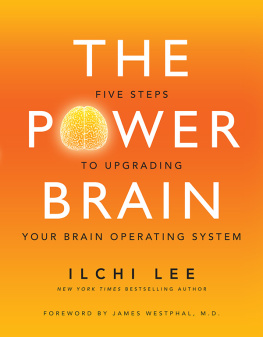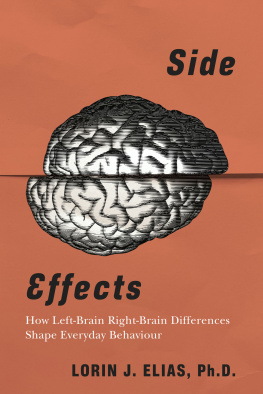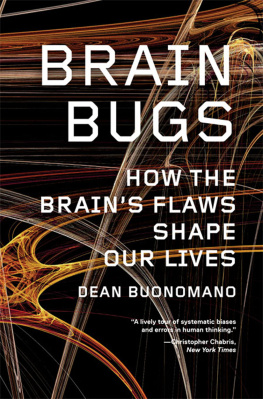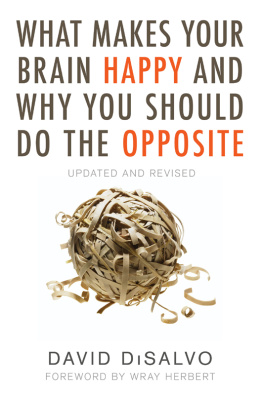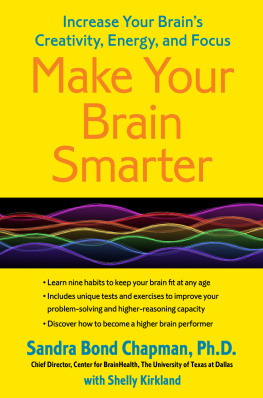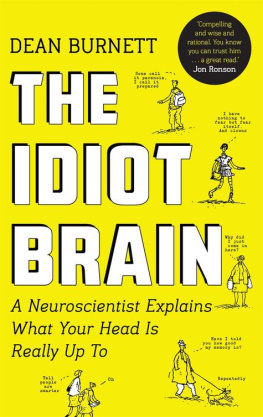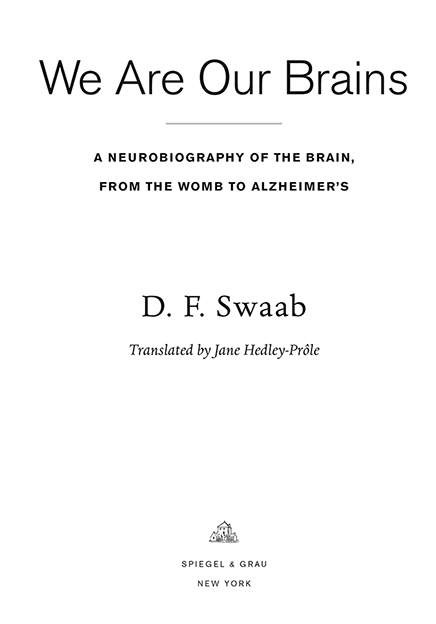D. F. Swaab - We Are Our Brains: A Neurobiography of the Brain, from the Womb to Alzheimers
Here you can read online D. F. Swaab - We Are Our Brains: A Neurobiography of the Brain, from the Womb to Alzheimers full text of the book (entire story) in english for free. Download pdf and epub, get meaning, cover and reviews about this ebook. year: 2014, publisher: Spiegel & Grau, genre: Home and family. Description of the work, (preface) as well as reviews are available. Best literature library LitArk.com created for fans of good reading and offers a wide selection of genres:
Romance novel
Science fiction
Adventure
Detective
Science
History
Home and family
Prose
Art
Politics
Computer
Non-fiction
Religion
Business
Children
Humor
Choose a favorite category and find really read worthwhile books. Enjoy immersion in the world of imagination, feel the emotions of the characters or learn something new for yourself, make an fascinating discovery.

- Book:We Are Our Brains: A Neurobiography of the Brain, from the Womb to Alzheimers
- Author:
- Publisher:Spiegel & Grau
- Genre:
- Year:2014
- Rating:5 / 5
- Favourites:Add to favourites
- Your mark:
We Are Our Brains: A Neurobiography of the Brain, from the Womb to Alzheimers: summary, description and annotation
We offer to read an annotation, description, summary or preface (depends on what the author of the book "We Are Our Brains: A Neurobiography of the Brain, from the Womb to Alzheimers" wrote himself). If you haven't found the necessary information about the book — write in the comments, we will try to find it.
Based groundbreaking new research, We Are Our Brains is a sweeping biography of the human brain, from infancy to adulthood to old age. Renowned neuroscientist D. F. Swaab takes us on a guided tour of the intricate inner workings that determine our potential, our limitations, and our desires, with each chapter serving as an eye-opening window on a different stage of brain development: the gender differences that develop in the embryonic brain, what goes on in the heads of adolescents, how parenthood permanently changes the brain.
Moving beyond pure biological understanding, Swaab presents a controversial and multilayered ethical argument surrounding the brain. Far from possessing true free will, Swaab argues, we have very little control over our everyday decisions, or who we will become, because our brains predetermine everything about us, long before we are born, from our moral character to our religious leanings to whom we fall in love with. And he challenges many of our prevailing assumptions about what makes us human, decoding the intricate moral networks that allow us to experience emotion, revealing maternal instinct to be the result of hormonal changes in the pregnant brain, and exploring the way that religious imprinting shapes the brain during childhood. Rife with memorable case studies, We Are Our Brains is already a bestselling international phenomenon. It aims to demystify the chemical and genetic workings of our most mysterious organ, in the process helping us to see who we are through an entirely new lens.
Did you know?
The fathers brain is affected in pregnancy as well as the mothers.
The withdrawal symptoms we experience at the end of a love affair mirror chemical addiction.
Growing up bilingual reduces the likelihood of Alzheimers.
Parental religion is imprinted on our brains during early development, much as our native language is.
Praise for We Are Our Brains
Swaabs neurobiography is witty, opinionated, passionate, and, above all, cerebral.Booklist (starred review)
A fascinating survey . . . Swaab employs both personal and scientific observation in near-equal measure.Publishers Weekly (starred review)
A cogent, provocative account of how twenty-first-century neuroculture has the potential to effect profound medical and social change.Kirkus Reviews
D. F. Swaab: author's other books
Who wrote We Are Our Brains: A Neurobiography of the Brain, from the Womb to Alzheimers? Find out the surname, the name of the author of the book and a list of all author's works by series.

